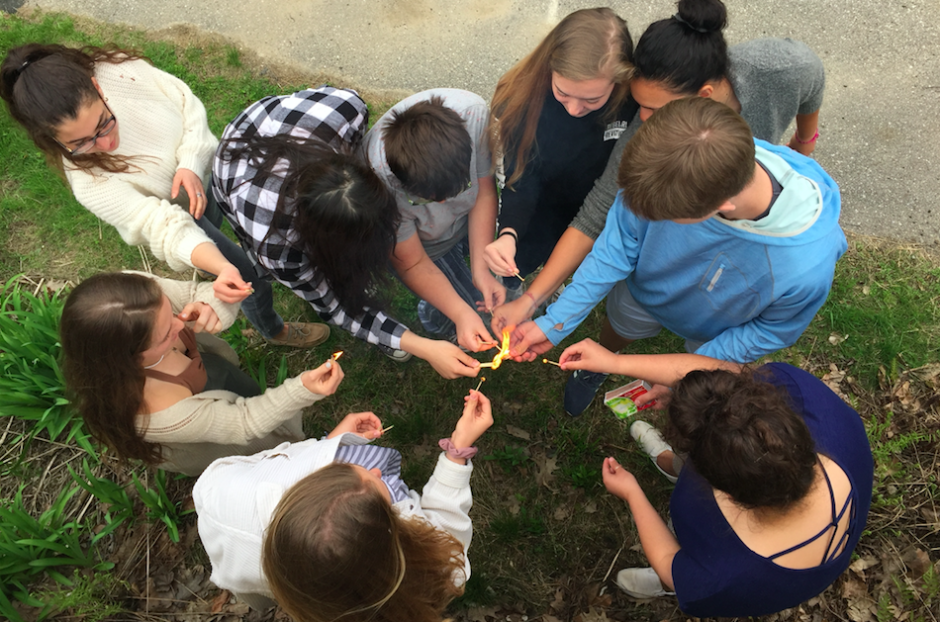
The perplexing antagonist in The Scarlet Letter by Nathaniel Hawthorne, Pearl, is the human embodiment of the everlasting mystery: can a sin truly be undone? She is Hester’s challenge to overcome even more so than Chillingworth is due to how deeply she cares for Pearl. It is easier to ignore and fight a problematic person that you care little for than it is to nurture a problematic person to a healthier, more passive state of being. Unfortunately, Pearl and Chillingworth were not the only problems that Hester faced. The Puritanism lifestyle is a belief system derived from the Catholic Church, but the Catholic religion is typically much more forgiving of sin. The strictness of Puritanism made it difficult to live in a natural way with an occasional misstep. Hester committed a sin that in modern day society would be shameful, however still not strictly punished and exposed to a point past mortification. That being said, a sin is a sin nonetheless, and in Hester’s world what she did was severely offensive and consequences were certainly received. Pearl, the result of that sin was additionally received and changed Hester’s life in a plethora of ways. The good and bad aspects of Pearl’s nature are the driving factors in Hester’s success. Although difficult at times, the benefits outweigh the hardships of her journey as a mother to Pearl. Pearl was Hester’s blessing disguised as a punishment for her sin because although raising a misbehaving kid was hard, the knowledge and joy that Pearl brought Hester are immeasurable benefits that exceed these challenges.
Pearl’s affinity for troublemaking makes her separate from the rest of the kids, but more importantly pushes her mom too far in already precarious situations. Early on in The Scarlet Letter while Pearl was still fairly young, she decides to further degrade her and her mother’s reputation among the important members of the town: “After putting her finger in her mouth, with many ungracious refusals to answer Mr. Wilson’s question, the child finally announced that she had not been made at all, but had been plucked by her mother off the bush of wild roses, that grew by the prison door” (Hawthorne 100). Although mortifying and damaging her already unstable and poor reputation, it was worth what these judgments taught them about people, even the people at the top of the chain. The leaders of there town were spectators in the conversation and watched Pearl give an answer that questioned Pearl’s faith in God, which directly related to what Hester was teaching her. By questioning her ability to be a good mother, Pearl risks her mother losing custody of her as it is currently a controversial issue among the town. Pearl not only knowingly mortified her mother but also jeopardized Hester’s custody of her and her position in the town which was already impaired. All of this simply because she has a knack for trouble. Her consistent rudeness toward her mother increases the poorness of her reputation and stability as a happy person. This is degrading and painful for Hester extremely often. Luckily, a new perspective taught her impressive concepts that were luckily passed onto Pearl. However, her mother was not the only teacher in her life.
Puritan society is a brutal lifestyle that has very strict laws and customs that must be followed, this acted as an instructor to Pearl on how to become independent and brave. To be set apart from this society because Pearl knows what is truly right in her mind speaks volumes about her strong and independent nature. Before defending herself and her mother, the narrator describes the feelings Pearl retains regarding Puritan customs and the way the Puritan children treat others in inhumane and unfair ways, “She saw the children of the settlement, on the grassy margin of the street, or at domestic thresholds, disporting themselves in such grim fashion as the Puritanic nurture would permit… Pearl saw, and gazed intently, but never sought to make acquaintance” (Hawthrone 84). Pearl developed a personal knowledge of where she belongs in society by her own will. Although she was an outcast and society shamed her, she did not belong in Puritan society to begin with and the exclusion was just confirmation of where she contently belonged. The drive and love for her mother made her get defensive and act in extremely brave ways. This is impressive for such a young girl, but when people are rude it’s important to develop this powerful mindset that will continue to grow within herself as a person. Luckily Hester is not stopping this growth, although it is very bold in this type of society. Independence grew through Pearl, and the exclusion of her daughter proved Hester that she may be a strong and powerful outcast as well. Strength, bravery, and independence are not the only traits that Pearl possesses.
Pearl is wise beyond her years because her mother and teacher in life developed a new perspective on society that gave her knowledge worth passing onto Pearl and she as well gained extra intelligence by experiencing life shamefully since birth. As a relationship between Hester and Dimmesdale rekindles, Pearl picks up on the peculiarities of it and recognizes how unnatural it is to have to hide love from the public eye. Pearl questions,
‘What a strange, sad man is he!’ said the child, as if speaking partly to herself. ‘In the dark night-time, he calls us to him, and holds thy hand and mine, as when we stood with him on the scaffold yonder! And in the deep forest, where only the old trees can hear, and the strip of sky see it, he talks with thee, sitting on a heap of moss! And he kisses my forehead, too, so that the little brook would hardly wash it off! But, here, in the sunny day, and among all the people, he knows us not; nor must we know him! A strange, sad man is he, with his hand always over his heart!’ (Hawthorne 210)
To understand the complexity of relationships to this extent is impressive for any person of any age, let alone a child. The bond betwixt love and the Puritan society customs is yet another idea that is challenging to fathom, because of how unnaturally spurious it is. The knowledge that sin taught Hester and passed onto Pearl is a lesson that can only be taught through the experiences it put both of them through. The benefit of each tricky situation they encountered taught them another lesson about the functions of people, relationships, humiliation, and sin.
The journey that Pearl and Hester preserved through together is the catalyst in the knowledge that put them above all others in their town. Although separated from the rest of the town and harshly alone at times, Pearl and Hester were self-governing and bold as the narrator states after they faced yet another conflict with the townspeople, “Mother and daughter stood together in the same circle of seclusion from humans: and in the nature of the child seemed to be perpetuated those unquiet elements that had distracted Hester Prynne before Pearl’s birth, but had since gun to be soothed away by the softening influences of maternity” (Hawthorne 85). If not for the exertions that came of Hester’s sin and Pearl’s development, they would have never transpired as prosperous or judicious as they achieved in obtaining a standard of prosperity that everyone strives for, happiness. The knowledge and growth Pearl provided for Hester outweighs the hardships that came with raising her, Pearl is the true angel in Hester’s life although sometimes disguised as a devil due to the struggles.

I remember writing this essay because I felt like Pearl was an underappreciated character. I felt that Nathaniel Hawthorne created Pearl in a way that made sure that she was not just a kid. This essay gets in depth about Pearl as a character. I was passionate about this essay. The outline was done well, and the writing is not too repetitive however there is a lot of jumbled and lengthy sentences. Too many words can often be less descriptive than less, I think this is a matter of making smarter choices with how I convey an idea down to each individual sentence.